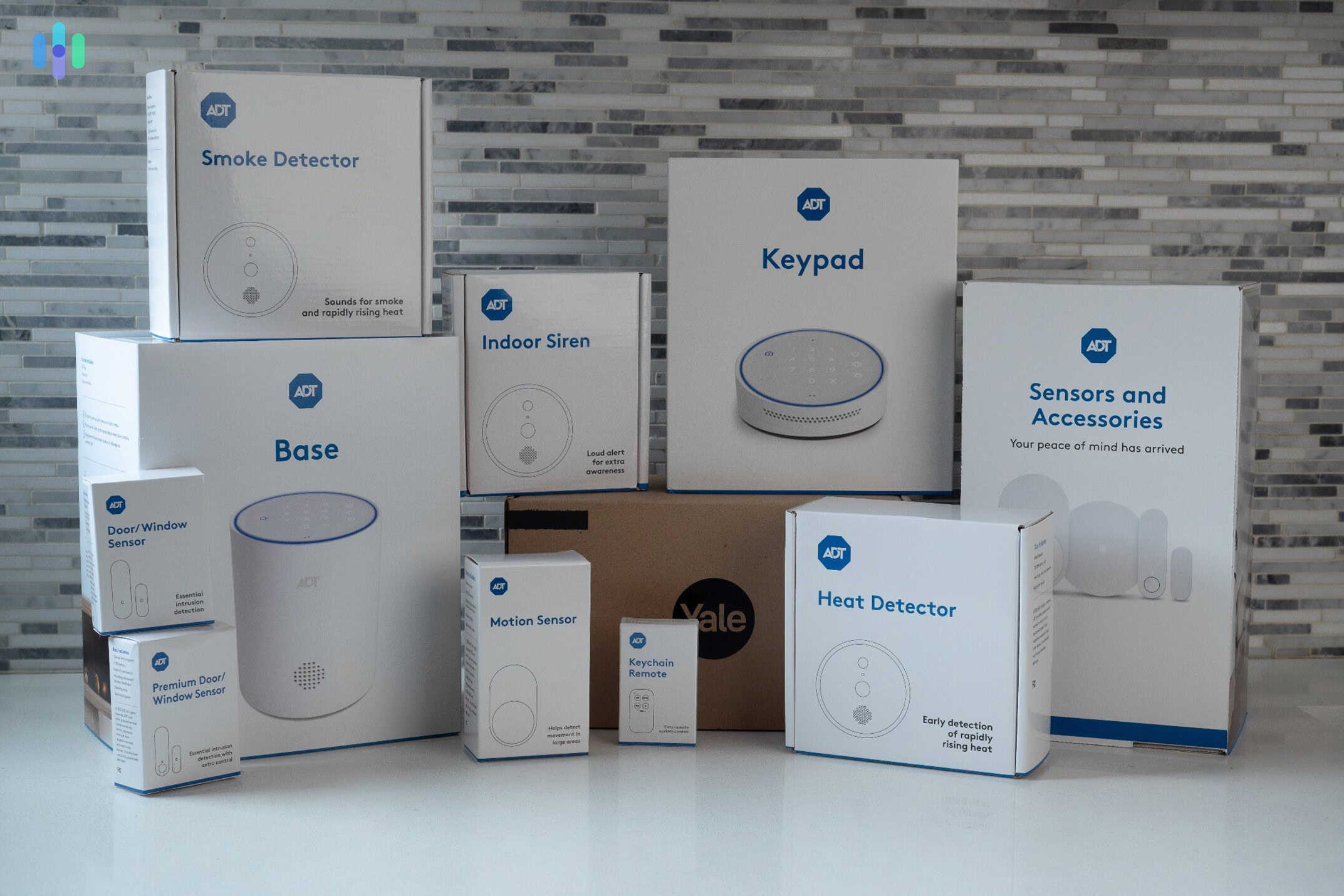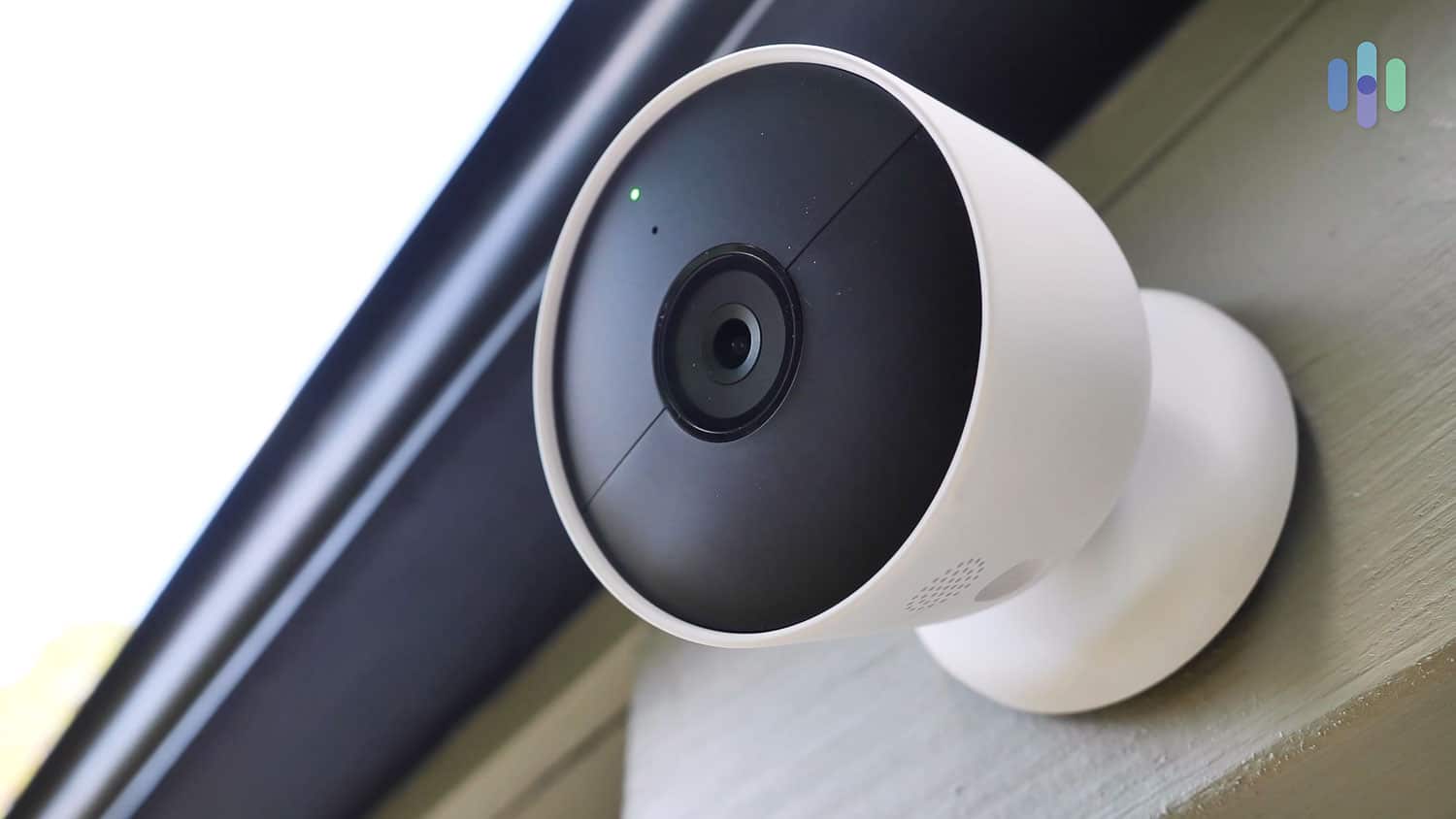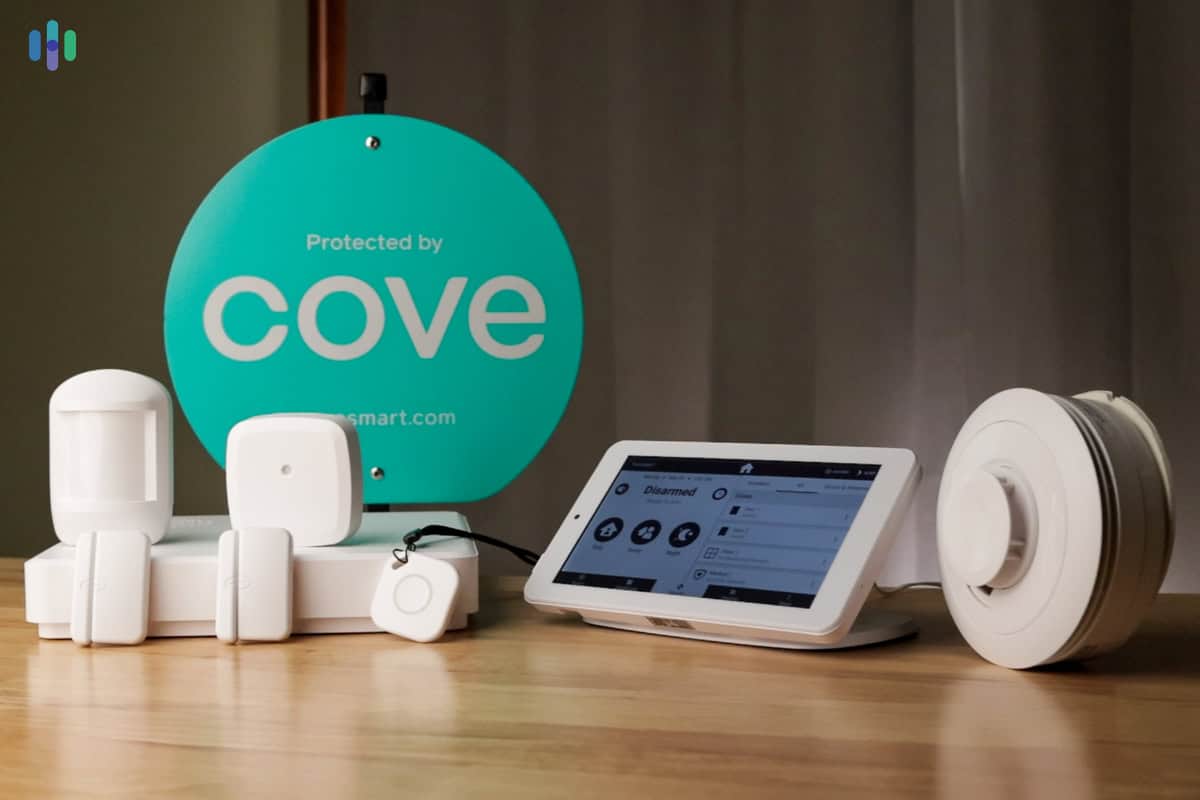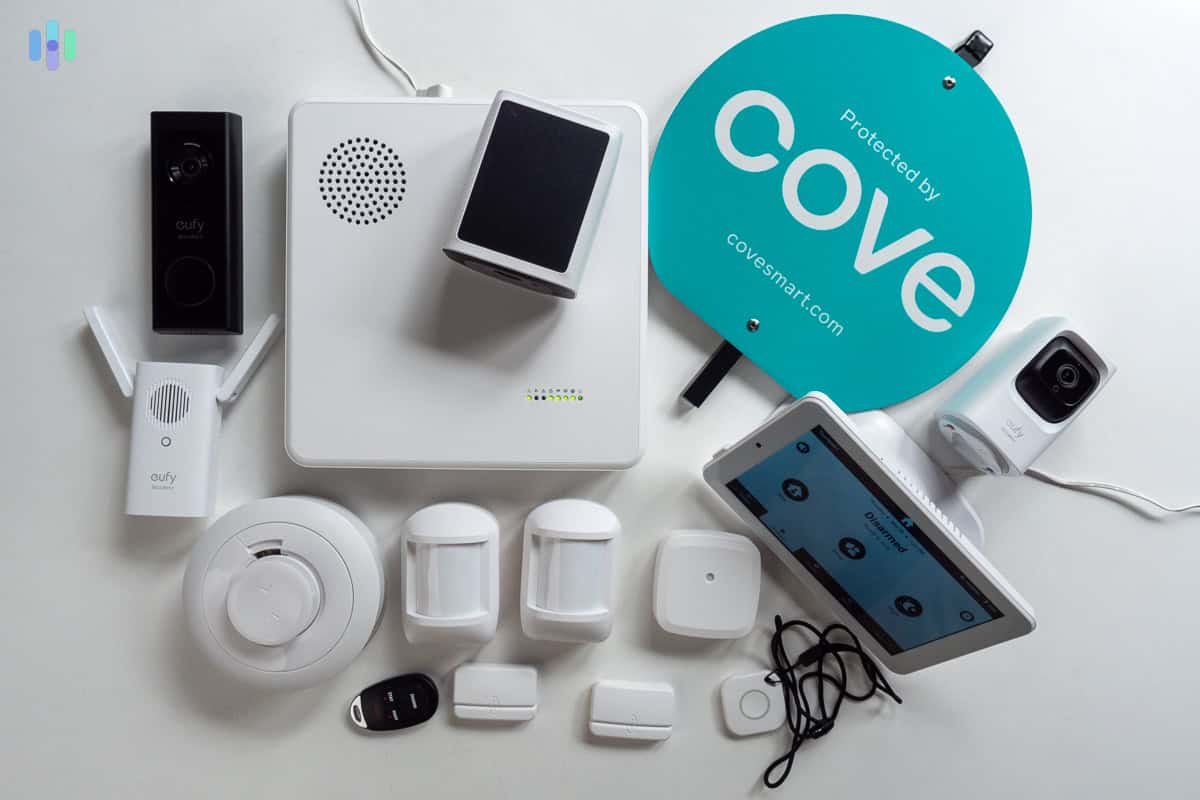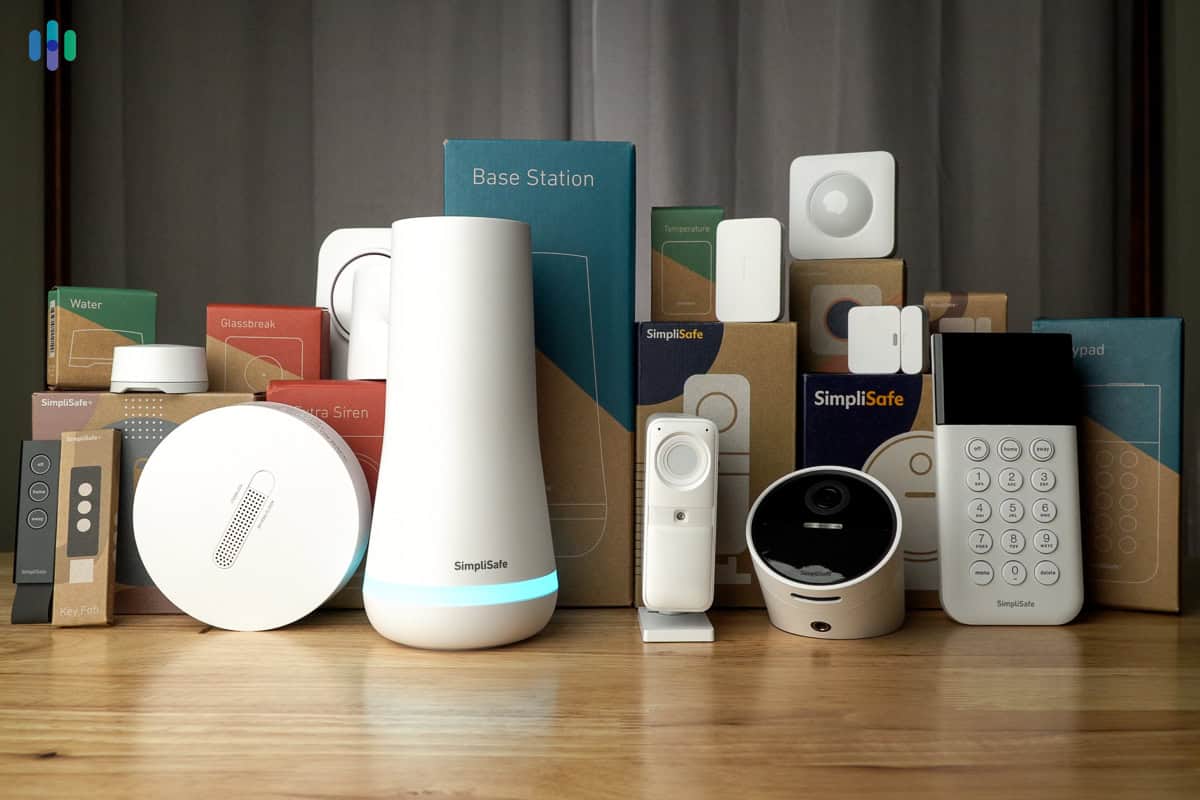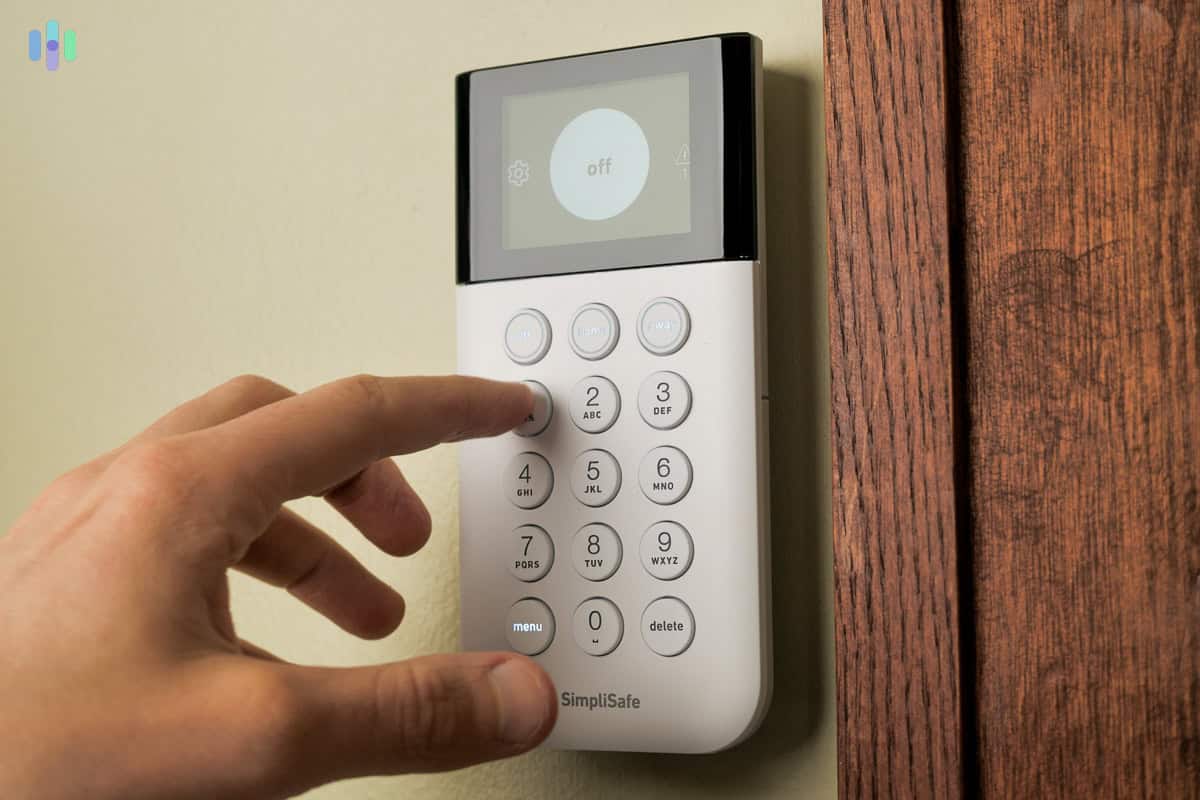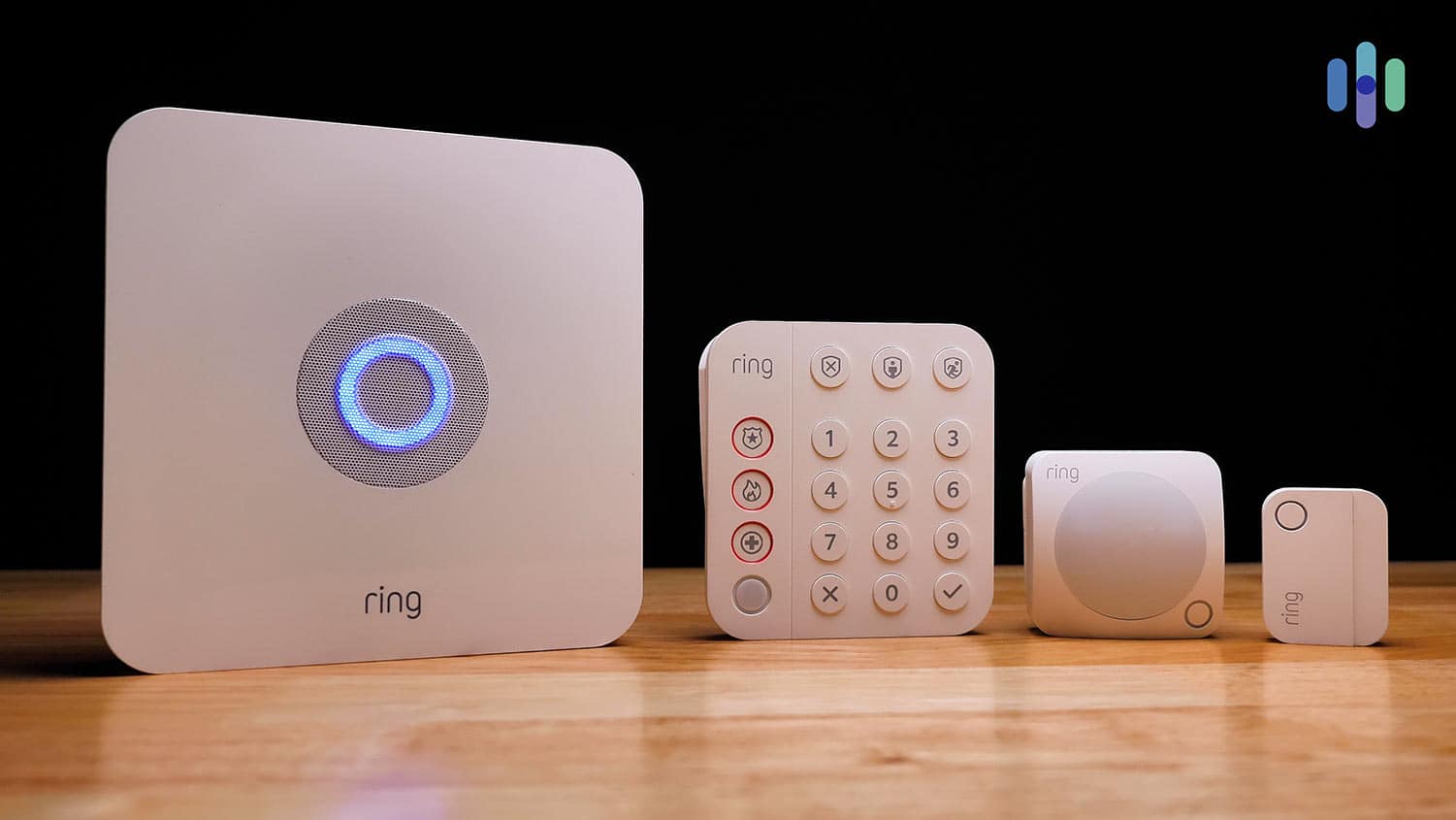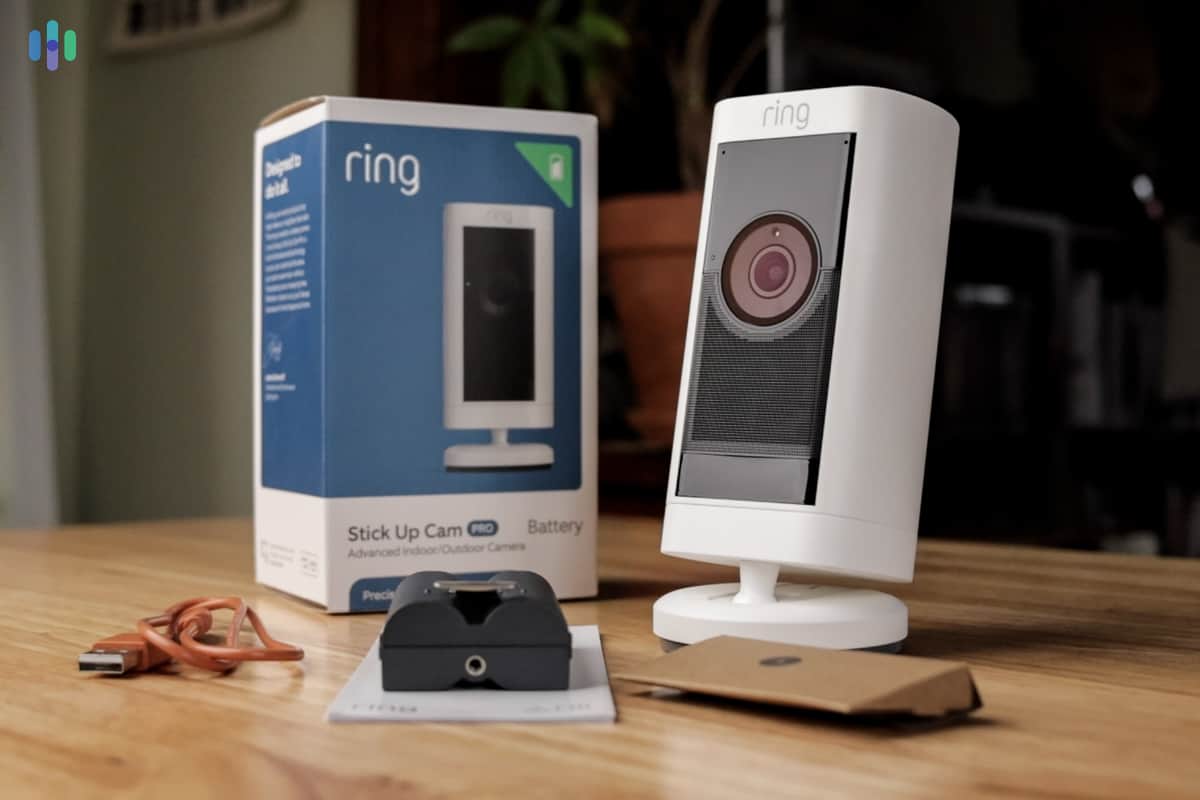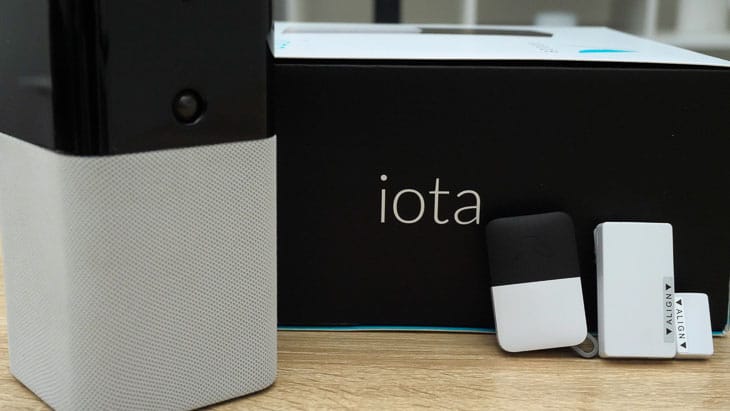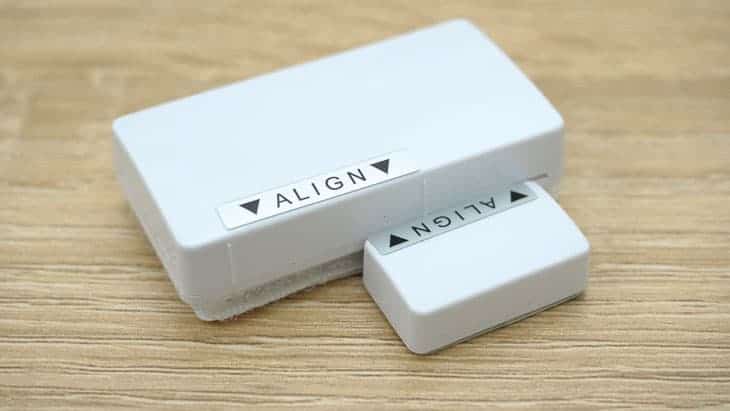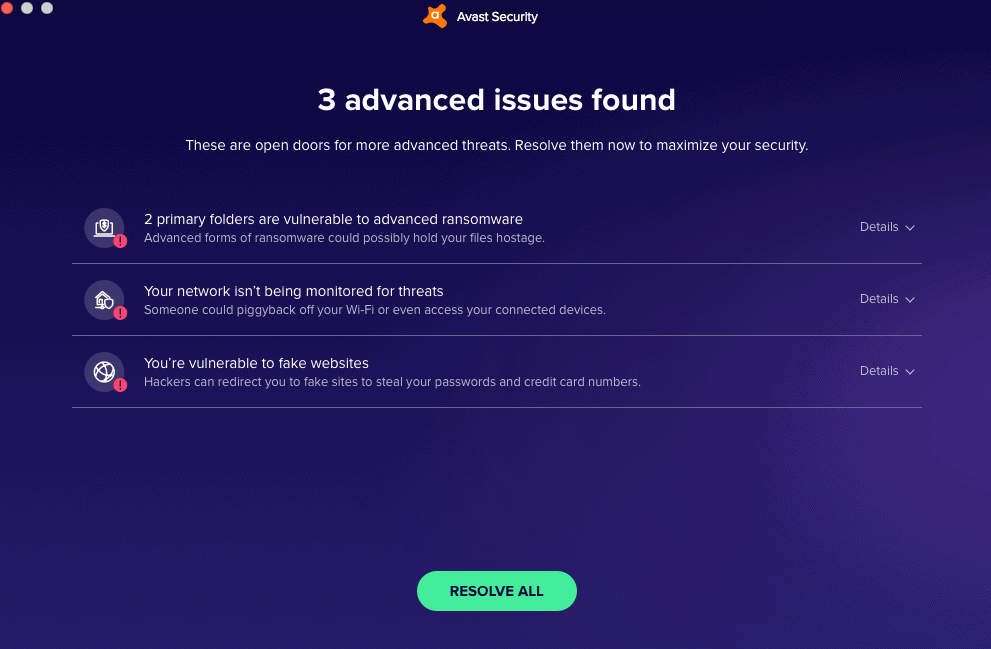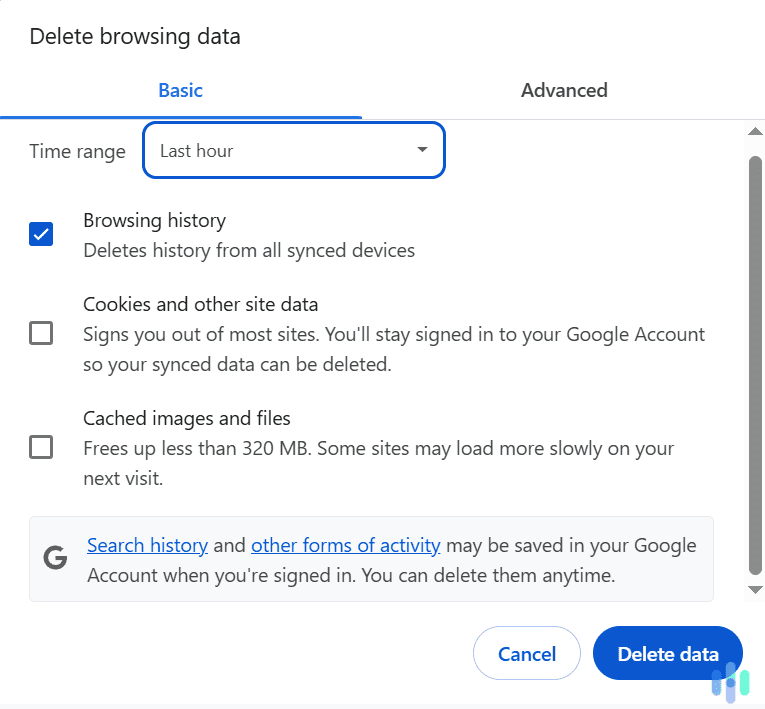The Best Security Systems for the Deaf in 2025
Our recommendation, ADT, can make emergency calls for you and sends alerts through its app instead of loud sirens.


- 12 professional monitoring centers in the country means someone is always available
- “SMART Monitoring” lets you manage alarms via text message
- Helpful automations and smart home integrations designed to keep you safe
- 12 professional monitoring centers in the country means someone is always available
- “SMART Monitoring” lets you manage alarms via text message
- Helpful automations and smart home integrations designed to keep you safe

- “InstaText” sends alerts to your phone and emergency contacts
- LED lights on the control panel change colors during different system statuses
- Reliable equipment and professional monitoring at an affordable price
- “InstaText” sends alerts to your phone and emergency contacts
- LED lights on the control panel change colors during different system statuses
- Reliable equipment and professional monitoring at an affordable price
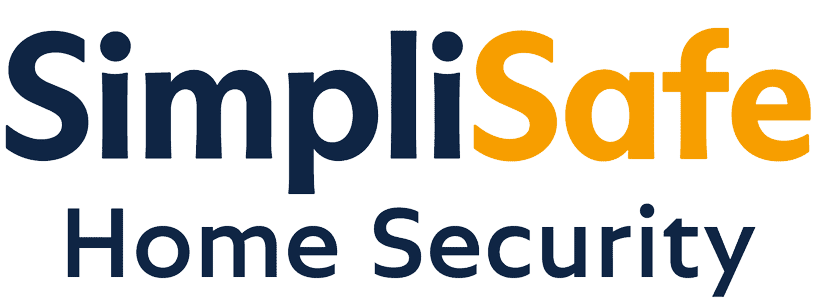
- “Intruder Intervention” has SimpliSafe agents speak to intruders through your camera to stop crimes
- “Active Guard Outdoor Protection” uses spotlights and sirens to keep trespassers away
- Voice commands for Google Assistant and Alexa
- “Intruder Intervention” has SimpliSafe agents speak to intruders through your camera to stop crimes
- “Active Guard Outdoor Protection” uses spotlights and sirens to keep trespassers away
- Voice commands for Google Assistant and Alexa
Being hard of hearing shouldn’t restrict you from installing one of the best home security systems. Many include accessibility features for the deaf, such as text-based alerts, flashing lights, vibrating devices, and professional monitoring services that take control in an emergency.
Our top picks – ADT, Cove, SimpliSafe, Ring, and abode – have features you might not have considered, such as smart home automations, voice control, and control panels with LED lights that change color. We’ve broken down the benefits of each of these systems and how they can keep deaf people informed on their surroundings and support them in their independence. Let’s take a look.
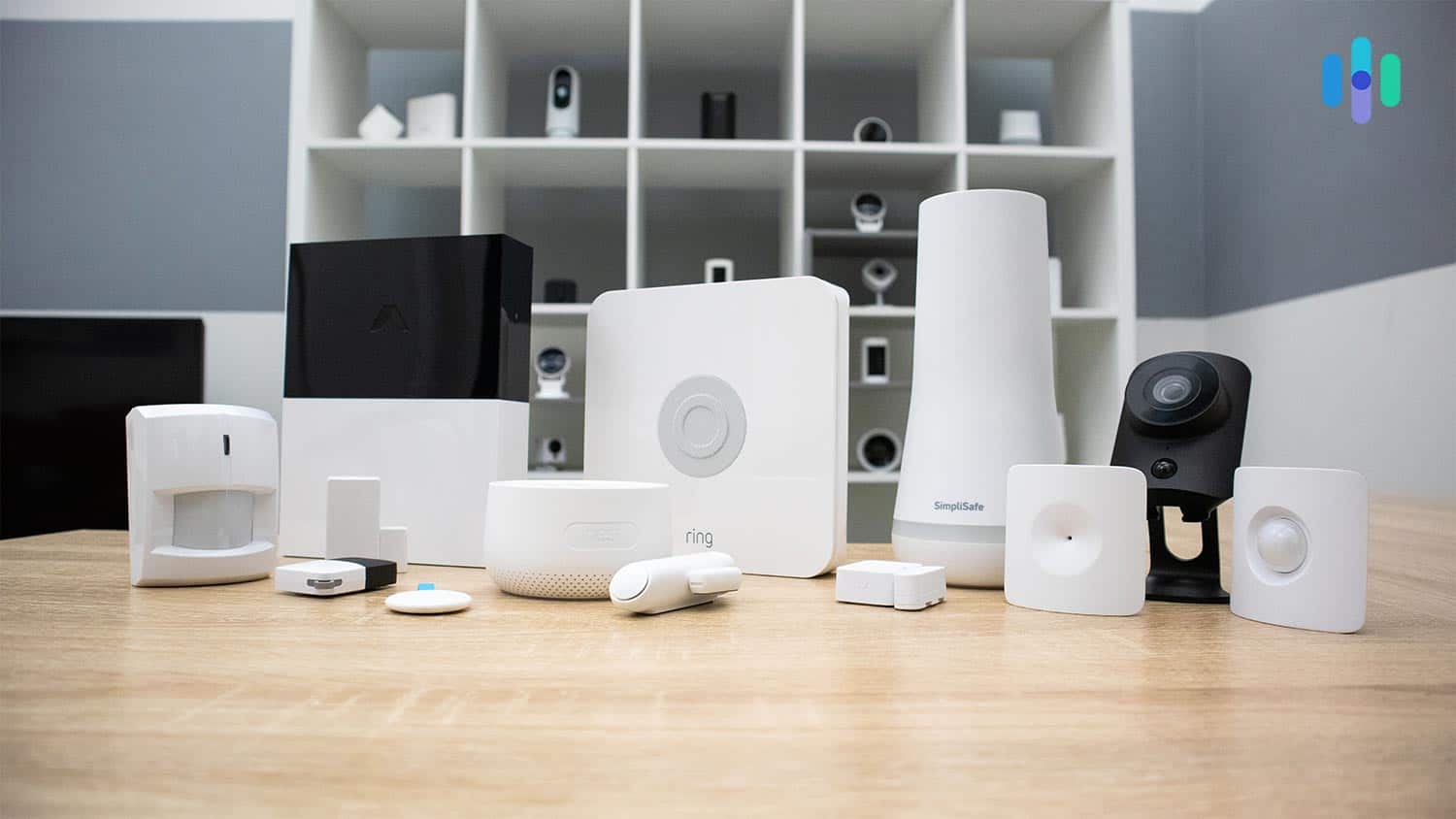
Comparison of the Best Security Systems for Deaf People
| System |
ADT

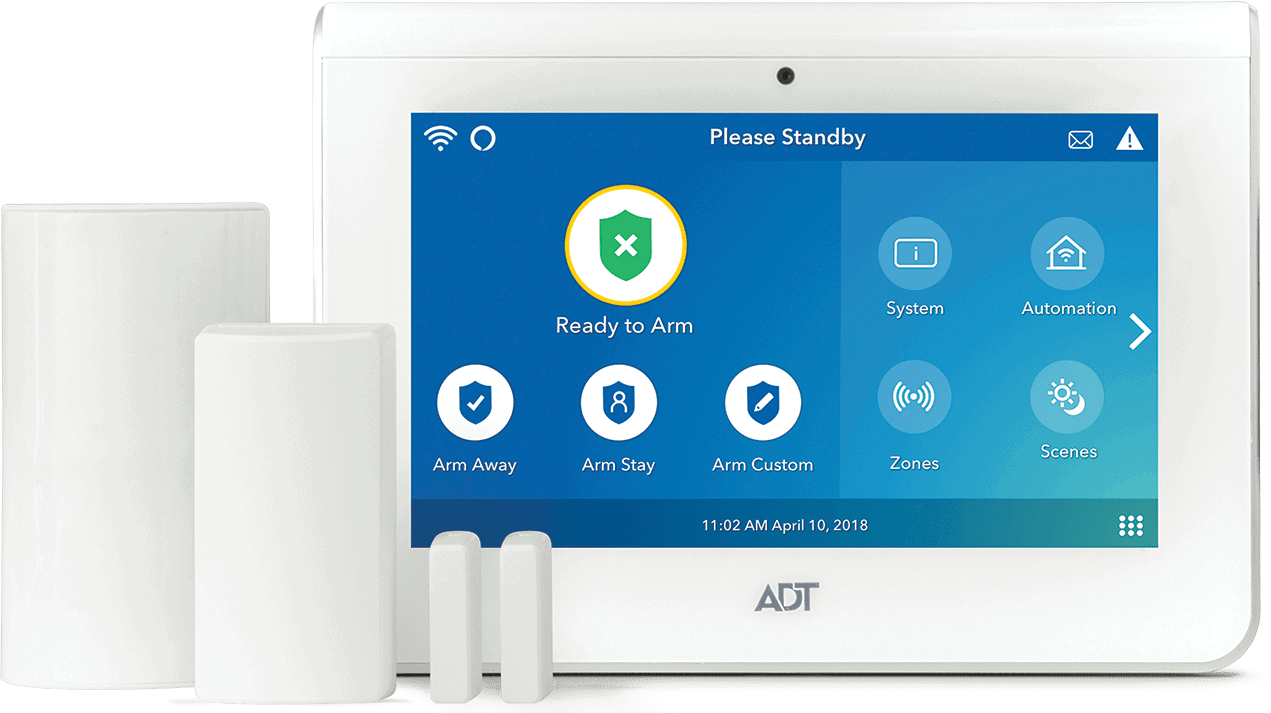
|
Cove

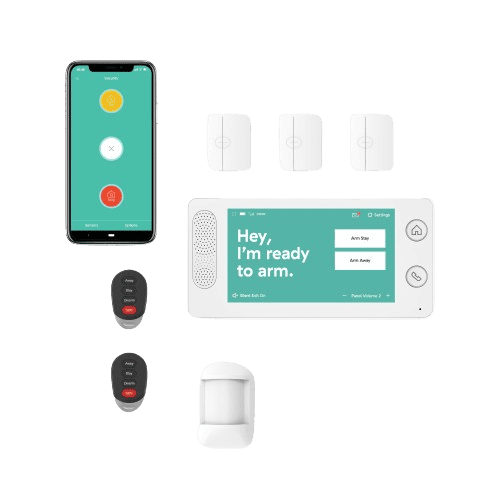
|
SimpliSafe

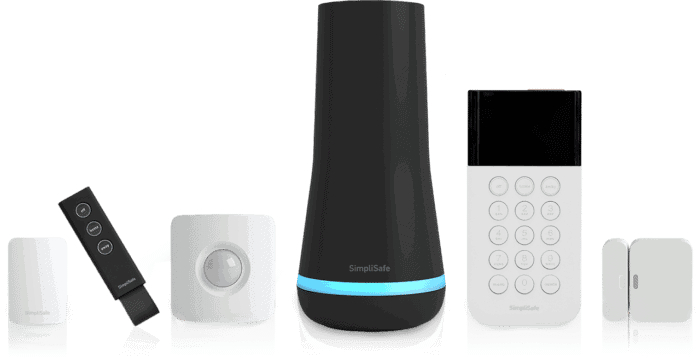
|
Ring Alarm

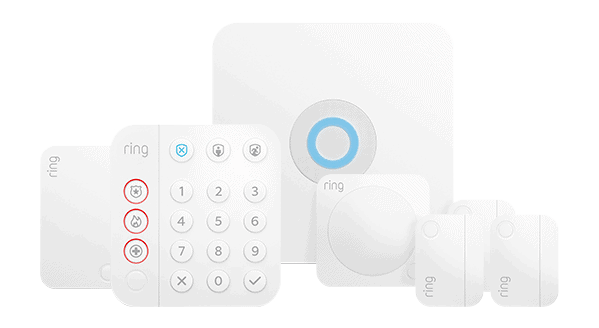
|
abode

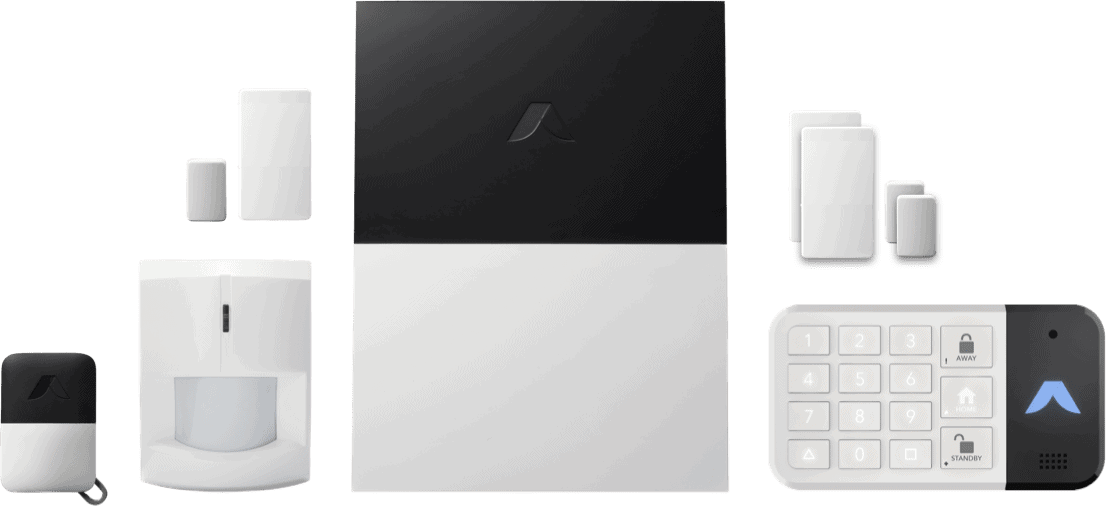
|
|---|---|---|---|---|---|
| Ranking | 1st | 2nd | 3rd | 4th | 5th |
| Ratings | 9.8/10 | 8.7/10 | 9.9/10 | 7.7/10 | 8.0/10 |
| Text-based alerts | Yes | Yes | Yes | Yes | Yes |
| Light alerts | Yes | Yes | No | No | Yes |
| Smart home integration | Yes | Yes | Yes | Yes | Yes |
| Installation | DIY or professional | DIY or professional | DIY or professional | DIY or professional | DIY only |
| Best subscription price | $24.99 per month | $9.99 per month | $9.99 per month | $4.99 per month | $5.83 per month |
| Professional monitoring cost | $24.99 per month | $19.99 per month | $21.99 per month | $10 per month with a Ring Home subscription | $6.99 per month |
| Equipment package price | Starting at $349 | Starting at $99 | Starting at $249.96 | Starting at $199.98 | Starting at $159.99 |
| Read Review | ADT Review | Cove Review | SimpliSafe Review | Ring Alarm Review | abode Review |
Summary of the Best Security Systems for the Deaf
- ADT - Best Monitoring
- Cove - Most Affordable
- SimpliSafe - Best for DIYers
- Ring Alarm - Best Camera Options
- abode - Best Smart Home Automations
Detailed List of the Best Security Systems for Deaf People
-
1. ADT - Best Monitoring
Product Specs
Equipment Costs Packages starting at $269 Monitoring Options Professional and DIY Monthly Monitoring Costs Starting at $24.99 per month Contract Lengths Month-to-month or 36 months and up Installation Options Professional and DIY Smart Platform Integration Alexa and Google Home ADT Overview
ADT has been in the security business for over 150 years and not only has a stellar reputation for security systems but also for medical alert systems. A quick browse on the website and you’ll find a range of equipment and smart devices with accessibility features, such as automating flashing lights when an alarm is triggered and visual alerts from Nest Hubs.
We tested a range of products from the ADT Plus range to see their suitability for deaf people. But the professional monitoring service is why you’re reading about ADT first. No other brand comes close. From the text message alerts to electronic dispatch for faster response times, they all play a valuable role in keeping you safe and getting you help when you need it fast. Throw in innovative features like “Trusted Neighbor” and ADT Alarm Messenger, and the decision of which security system you should install becomes a lot easier.
ADT Features for Deaf Users
Every second counts in an emergency, and ADT is aware of this. It has implemented multiple protocols to help you when you’re in danger. The first is “SMART Monitoring.” When an alarm is triggered, you’ll get a text message that lets you verify or cancel the alarm. It can even be sent as part of a group chat using ADT Alarm Messenger.
Pro Tip: We also added our neighbors to our ADT “Trusted Neighbor” list. When they approach our home, our security cameras use facial recognition to send a notification to them and provide access. It’s useful in an emergency or when you’re so comfy in your favorite chair you don’t want to get up.
The ADT Base also has an LED ring on the top of the unit that changes color to let you know alarms are triggered. We didn’t need to memorize a bunch of colors. Green means it’s disarmed, and a blinking red light means an active alarm. While we’d probably stick to checking our smartphone for updates, the LED lights are a good backup to have if your phone is in another room.
ADT Pricing
You can have a chat with ADT on their website and organize for someone to come out to your home and install a home security system. After all, ADT is one of the best professionally installed systems, even if there is a hefty fee. But we also think it’s one of the best DIY systems because it has the ADT Self Setup security system. It might not be as good as Cove or SimpliSafe, but there’s a lot to like about it..
>> Compare Options: ADT vs. SimpliSafe
Equipment packages start from $349, and you can add as many extra devices as you want. Some essentials we recommend are the battery-powered Google Nest Cam ($179.99) for indoors, Google Nest Hub ($99.99) to see alerts, and Google Nest Cam with Floodlights ($279.99) for outdoors. These come as part of the ADT Self Setup package, which means you can install them yourself and also save some money on professional monitoring.
The Nest Cam is a must-have for your home security system. The only downside of adding security cameras to your ADT security system is you’ll need to pay for the most expensive monitoring plan. Packages start from $24.99, but for video support and that nifty “Trusted Neighbor” feature we mentioned earlier, you’ll be up for $39.99 per month. If you opt for professional installation, you’ll have to pay $49.99 per month. That makes it the most expensive monitoring plan on this list.
FYI: If you’re interested in an ADT system but you’re still a little turned off by the price, we get it. You should head over to our guide to ADT’s sales and deals to see if you can take advantage of some savings.
Worth Considering
Price is the biggest drawback with ADT. You could choose to finance your system, but it means signing a contract. They can last up to 36 months, which is a long time to stay committed to a company.
>> Learn More: Best No-Contract Security Systems
But we think ADT offers the best bang for your buck. The professional monitoring is award-winning and the best in the industry. You’ll also be hard-pressed to find more reliable equipment. However our next pick has a strong case as it relies on cellular connections over Wi-Fi networks.
-
2. Cove - Most Affordable
 View Packages Links to Cove
View Packages Links to CoveProduct Specs
Equipment Costs Systems start at $90 Monitoring Options Professional only Monthly Monitoring Costs Starting at $19.99 per month Contract Lengths Month-to-month Installation Options Professional or DIY Smart Platform Integration Alexa and Google Home 
Cove Overview
Cove has an extensive range of equipment suitable for anyone hard of hearing. The cost of home security systems can quickly add up and put unnecessary stress on other essential expenses. That’s why we’re recommending Cove. But while it’s the cheapest option on this list, Cove doesn’t sacrifice quality and has multiple features suited for deaf people.
Whether you need a security system for an apartment or a large house, you’ll find the necessary equipment to protect your home. There are also two professional monitoring plans available that are not just affordable but also include “InstaText,” which allows you to confirm or cancel an alarm via text message.
Cove Features for Deaf Users
Like ADT, Cove sends a text message with a link as soon as an alarm is triggered. Opening it brings up the option to dismiss or dispatch. The decision doesn’t sit all on your shoulders. You can add your emergency contacts to “InstaText” so they get notified as well. However speed is of the essence. You only have 15 seconds to dismiss the alarm. If Cove doesn’t hear from you, they’ll send help your way.
Another similarity with ADT is the control panel uses LED lights to indicate system statuses. The light scheme is also similar. A solid green light means the system is disarmed, and a blinking red light signifies an active alarm. If you’re like us and have your phone on you at all times, the Cove app will send push notifications that let you request help or cancel alarms.
Cove Pricing
There are two Cove plans to choose from, and one if you add security cameras to your system. We recommend Cove+ anyway, which is $29.99 per month. It’s cheaper than ADT and our next pick, SimpliSafe. But there are some differences in what’s included in the plan.
FYI: Cove has three 24/7 monitoring centers across the United States. It’s not quite as many as ADT’s 12 in North America, but it means someone should always be available if one of the buildings is unavailable.
Cove+ includes voice control for Google Assistant and Alexa, but the commands are limited. We asked it to arm the system, disarm the system, and put in various statuses like away. But that’s about it. You can’t integrate third-party devices with Cove like you can with ADT. SimpliSafe can’t do that either.
What Cove can do is give you a good deal on equipment. Every time we’ve visited the Cove website the company is running a sale. Now that we think about it, we’ve never paid full price when buying a system to test. One sale had 70 percent off equipment and a free HD camera. That meant touch-screen panels were $45 down from $150. Entry sensors were just $4.50 and glass break detectors were going for $15. No other system has products this affordable. It makes Cove perfect for anyone needing a lot of equipment for a security system to cover a larger home.
It feels like Cove is always running a sale, so you probably won’t pay full price for all this equipment. We didn’t. Worth Considering
Smart home integration is the main drawback for Cove systems. You can schedule your system to arm and disarm throughout the day, but that’s about it. There are no other automations, such as locking doors at specific times, like you can with ADT. Still, we like that Cove is budget-friendly and lets you pay month to month. This way you can switch to another security system if you need more features in the future.
>> Learn More: Best No-Contract Security Systems
-
3. SimpliSafe - Best for DIYers
Product Specs
Equipment Costs Packages starting at $250.96 Monitoring Options Professional and DIY Monthly Monitoring Costs Starts at $21.99 per month Contract Lengths Month-to-month Installation Options DIY or professional Smart Platform Integration Alexa and Google Home SimpliSafe Overview
The SimpliSafe security system we tested has thoughtful accessibility features for people who are hard of hearing. Just like Cove, you can set up your SimpliSafe security system yourself. It took us less than an hour to have everything up and running thanks to the SimpliSafe app. We didn’t even need to open our toolbox. Of course, if you prefer someone setting up your equipment, you can pay a fee starting from $124.99. The technician will even talk you through how everything works.
>> Learn More: Professional Installation vs. DIY
The reason SimpliSafe made this list is due to its monitoring features. Yes, you will receive text messages when an alarm is triggered. But SimpliSafe takes it a step further with its “Intruder Intervention” and “Active Guard Outdoor Protection.” We’re going to discuss that next.
SimpliSafe Features for Deaf Users
“Intruder Intervention” is included in the “Core” monitoring plan ($31.99 per month) and requires the Wireless Indoor Camera, but it’s a great feature to have in your arsenal. When the security system is triggered, the camera will activate and allow a SimpliSafe agent to access the live feed. They’ll also communicate with the intruder via the two-way speaker and attempt to stop them from continuing with the crime. We don’t just recommend this feature for the deaf. It’s a must-have for everyone.
FYI: The Wireless Indoor Camera has a privacy shutter which stays closed until motion is detected. So you don’t need to worry about SimpliSafe agents invading your privacy and judging you while you’re watching the latest season of Real Housewives.
A similar feature is available for the outdoor camera. “Active Guard Outdoor Protection” lets SimpliSafe agents stop intruders in the tracks with spotlights and sirens. They can also use the two-way speaker to let them know authorities are on their way. The only downside is that this feature requires a “Pro” subscription, which is $49.99 per month. That’s on par with ADT’s most expensive plan. So you’ll have to weigh up if the extra investment is worth it.
>> Other Options: Best Security System Apps
SimpliSafe Pricing
Another option is to do away with professional monitoring altogether. SimpliSafe has a free plan that lets you access live feeds, arm and disarm your system, and receive notifications when an alarm is triggered. But it means you’ll have to contact emergency services if you need help, which is why we recommend subscribing to a SimpliSafe professional monitoring plan instead.
Pro Tip: SimpliSafe doesn’t run sales as often as Cove, but you’ll still find a good deal from time to time. For example, during Prime Day they had savings on equipment up to $200 and during smaller holidays they slashed prices by up to 50 percent. Keep an eye on our SimpliSafe deals page so you don’t miss out on one of these specials.
As for the equipment costs, SimpliSafe is one of the most affordable security systems around. Even when the company isn’t running a sale. SimpliSafe’s Wireless Indoor Camera we mentioned before is only $149.99, which is $30 cheaper than a battery-powered Google Nest Cam. Motion sensors are $34.99 and a glass break sensor is $39.99 per month; both are cheaper than ADT. The only issue we have is some of the outdated equipment, like the keypad you see below. We prefer ADT’s Home Security Touchscreen Panel, which is also portable and has a better display for alarms.
SimpliSafe’s keypad is wireless and reliable, but we think it looks a little dated. Worth Considering
Even if you’re not very handy, SimpliSafe is still one of the best DIY security systems on the market. That said, we’re not a huge fan of its overreliance on command strips to affix equipment to walls. We had some trouble getting our motion detector to stick; it kept falling down and creating false alarms. We ended up using screws to mount everything on the walls.
-
4. Ring Alarm - Best Camera Options
Product Specs
Equipment Costs Packages starting at $244.95 Monitoring Options Professional and DIY Monthly Monitoring Costs $10 with the purchase of a Ring Home plan Contract Lengths 1-12 months Installation Options DIY or professional Smart Platform Integration Alexa and Google Home Ring Alarm Overview
Amazon’s security brand has expanded beyond Ring video doorbells. Now you can buy indoor and outdoor cameras, motion sensors, and more. It even works with IFTTT, which means you can integrate it with third-party devices.
We added several pieces of Ring equipment to accompany our video doorbell. One of those devices is Hue light bulbs. IFTTT even has automation on its website where you can blink the lights whenever someone activates the Ring doorbell. Another workflow involves turning on lights when movement is detected. These triggers are perfect for the hearing impaired, who prefer visual warnings over phone notifications or text messages. It’s also good for your personal safety considering Ring devices don’t have LED alerts on hubs like Cove or ADT.
>> Compare Systems: Ring vs. ADT
Ring Alarm Features for Deaf Users
Like ADT, Cove, and SimpliSafe, Ring sends a text message when an alarm is activated. You can also add emergency contacts so everyone has access to the alert. Push notifications can even be enabled in the Ring smartphone app. We recommend turning this on as it means your phone will vibrate when a notification comes through.
We mentioned how you can integrate Hue light bulbs with Ring, but another option is to buy spotlights from the website. The Spotlight Battery shines brightly once motion is detected. We installed one in our backyard, where it’s poorly lit. It’s helpful when we’re taking the trash out and want to avoid stepping in mud. But it can also be used to stop intruders in their tracks and alert anyone who is hard of hearing to stay alert.
FYI: Instead of installing a spotlight, you could put up a security camera. The Ring Spotlight Cam also beams light the second it detects motion. It will even start recording and notify you of an intruder via the Ring app.
Ring Pricing
Like SimpliSafe, you can self-monitor your Ring security. It’s even on our list of the best security systems with no monthly fees. Of course, we don’t recommend that. We highly recommend subscribing to a Ring Home “Standard” plan, and spending the extra $10 per month for professional monitoring.
FYI: Ring’s professional monitoring add-on is only available on the “Standard” ($9.99 per month) and “Premium” ($19.99 per month) plans. The main difference between the two plans is that “Premium” includes 24/7 recording, smart video search, and SOS emergency response.
Ring’s equipment prices are in the same ballpark as Cove – and in some cases cheaper. When we were putting together our system, we got the indoor/outdoor battery-powered Stick Up for $99.99 and the Spotlight Cam Plus for $169.99. Entry sensors cost us $19.99 and a motion detector with smart lighting was $24.99. These are the normal prices, but it’s not uncommon for Ring to run a sale. Keep an eye out for Ring Prime Day deals, considering the company is owned by Amazon.
We installed our Ring Stick Up Cam inside, but it also works outdoors. Worth Considering
Ring’s equipment isn’t exactly on par with ADT’s – especially the Google Nest range, which are some of the best security cameras we’ve tested. Don’t get us wrong, though. Ring has some excellent security cameras, and its “Standard” and “Premium” Home subscriptions include 180 days of cloud storage – longer than other plans on this list. It comes down to whether you want top-of-the-line equipment or are happy with a cheaper but reliable alternative.
-
5. abode - Best Smart Home Automations
Product Specs
Equipment Costs Packages starting at $159.99 Monitoring Options Professional and DIY Monitoring Costs Starting at $6.25 per month Contract Lengths Month-to-month or Yearly Installation Options DIY or professional Smart Platform Integration Alexa, Google Home, and Apple HomeKit abode Overview
Our abode security system was one of the easiest to set up and comes with a ton of smart home integrations While abode might be a relative newcomer to the home security industry, it’s already making a big impact. We’re most impressed with its smart platform integrations and home automations. If you’re like us and prefer to go straight to bed instead of checking everything is locked, you’re going to love abode.
Taking advantage of these integrations benefits the deaf. Just like with Ring, you can create routines and pair equipment to create visual cues instead of relying on your smartphone. There’s also a lot you can do with voice commands. Also, abode is one of the few systems that integrate with Apple HomeKit, but you can also give commands to Alexa and Google Home.
>> Learn More: Best Security Systems for Google Home
abode Features for Deaf Users
Where abode stands out is in its integrations with Z-Wave and Zigbee devices. This opens the possibility of integrating thousands of smart home products. What’s even better is how you can create automations using the CUE system. You don’t need to be an IT expert to use this platform. It works on this simple premise of “if this happens, then do that”.
We connected the motion sensors with our smart light bulbs. When motion is detected, lights would turn on. But we took it further. We also connected our video doorbell. When someone rings it, the lights would blink to let us know someone is at the front door. Another automation we created was with our abode Cam 2. When the system is armed, and it detects someone, the lights would flash multiple times to alert us.
FYI: Thankfully, abode Cam 2 knows the difference between people and pets. We didn’t want our lights flashing every time our neighbor’s cat ran by the camera.
>> Compare Options: SimpliSafe vs. abode
We set up automations with our smart light bulbs whenever the abode entryway sensors detected movement Abode Pricing
You will need a professional monitoring plan for some of these smart features. The “Standard” plan is only $6.99 per month. But we recommend the “Pro” plan as you’ll gain cellular backup, which is good to have if you have a dodgy internet connection. It’s $24.99 per month, which is cheaper than SimpliSafe. And considering it comes with the CUE monitoring and has better voice controls than SimpliSafe, we think it’s worth it.
>> Compare Options: SimpliSafe vs. abode
As for equipment, abode’s costs are reasonable – when they are running a sale. The good news is that this seems to happen regularly. We visit the website throughout the year and see prices slashed by up to 50 percent. The abode Cam 2 we mentioned earlier was just $29.99, down from $59.99. We grabbed a Multi Sensor, which detects motion, light, temperature and humidity. It was only $35.99, down from $59.99.
Pro Tip: If you already have Nest equipment or other smart security equipment lying around the house, it’s worth checking to see if they integrate with abode. You might be able to remove some items from your cart and save yourself some cash.
Worth Considering
The main downside with abode is its website. Cove and SimpliSafe took us step by step through each category so we didn’t miss anything. But abode doesn’t have an equivalent tool. They also don’t have an extensive security camera range. So if this device is going to play an important part of your system, you might be best to choose a different company.
Can Deaf People Use Security Systems?
Security systems no longer rely solely on sirens when an alarm is triggered. Today, there are multiple ways a security system can alert you, such as:
- Flashing lights: LED lights flash on the control panel or hub to let you know about active alarms. They even change colors to cater to different scenarios.
- Push notifications: You’ll receive a notification on your smartphone when motion is detected or alarms are triggered. It does require the security system app to receive notifications.
- Text messages: Companies like ADT, Cove, and SimpliSafe send text messages when an alarm is triggered. You can cancel or dismiss it via the same message.
Pro Tip: If you have a smartwatch that receives text messages, make sure it’s set to vibrate so you can feel the alert. It’s handy if you don’t have your phone on you.
While you might not be able to hear sirens, we still recommend installing them. Some iPhones and Android devices can notify you about important sounds happening around, such as a smoke alarm beeping or your doorbell ringing. This feature is also available for some smartwatches. It can be a lifesaver while you’re sleeping.
What Communication Methods Are Available for Security Systems for the Hard of Hearing?
Responding to alerts can be difficult for some deaf people. It’s one of the reasons why we recommend professional monitoring. This way, the monitoring center can organize for first responders to get to your location as quickly as possible. In many cases you won’t need to speak to them on the phone. You can respond to a text message or your emergency contacts can action the alert on your behalf.
If you need to speak to the customer service teams, security companies offer multiple contact methods. We recommend jumping into a web chat on the website. It’s our preferred method because we can copy and paste the transcript so we don’t forget what they said. You can’t do that on a phone call. Many brands also have knowledge bases so you can try to find the answer for yourself. The good ones even include videos in case you’re a visual learner.
Is It Difficult to Set Up Smart Home Routines for Deaf People?
Security companies have made it easier for everyone to create smart home routines. Even if you have never set up one before, it won’t take long for you to build routines or automations that do everything from flash light bulbs to automatically lock doors at night. We think abode has the best system with its “if this happens, do that.” We could also add conditions, such as don’t perform the action when we’re in the house or while we’re sleeping.
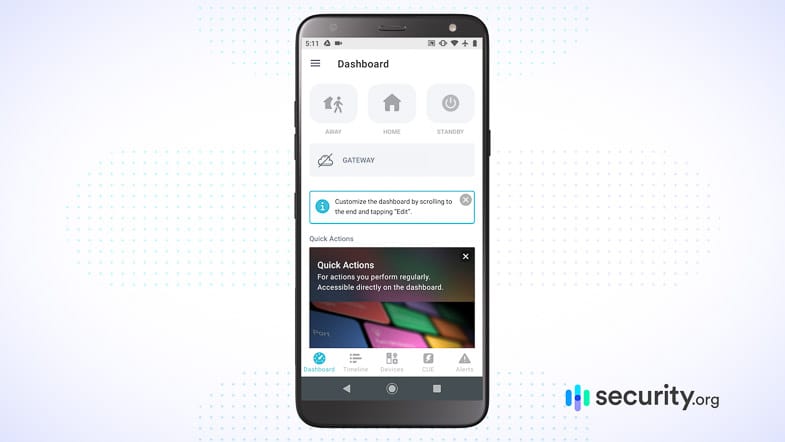
The smartphone apps can walk you through each step and offer a list of possibilities. There might even be some you hadn’t thought of. We found an automation that sent us a notification when our garage door is left open for more than 10 minutes. It even let us close it. Alerts like this can help improve your security and close any blind spots so you don’t leave yourself exposed.
Our Methodology
When it comes to home security systems for the deaf, we spoke to audiologist Dr. Kasey Craig about what to look for and how to test systems. She told us that there are security systems made specifically for deaf people, as well as products compatible with general security systems, like bed shakers and cell phone docks with lights. What’s the advantage of a deaf person using a more general security system rather than one designed specifically for deaf people?
“In reality, a lot of deaf people are living with hearing people, so they want to … integrate [deaf-specific] devices into their normal system[s],” Dr. Craig said. For compatible products, she recommends an online shop called Oaktree Products. In this article, we focused on general home security systems compatible with deaf-specific devices, assuming that many deaf people live with hearing people. However, some products may require adapters to be compatible.
We also spoke with deaf educator Kelly Short. After consulting with multiple audiologists, she told us that deaf and hard-of-hearing people should look for home security systems with the following features:
- Notifications: From text and email notifications to blinking or flashing lights to bed shakers to vibrations, Short recommends systems with multiple points of communication.
- Indoor cameras: “People who are deaf [or hard-of-hearing] may use inside cameras more than the average user so they can see what is going on throughout the home,” Short said.
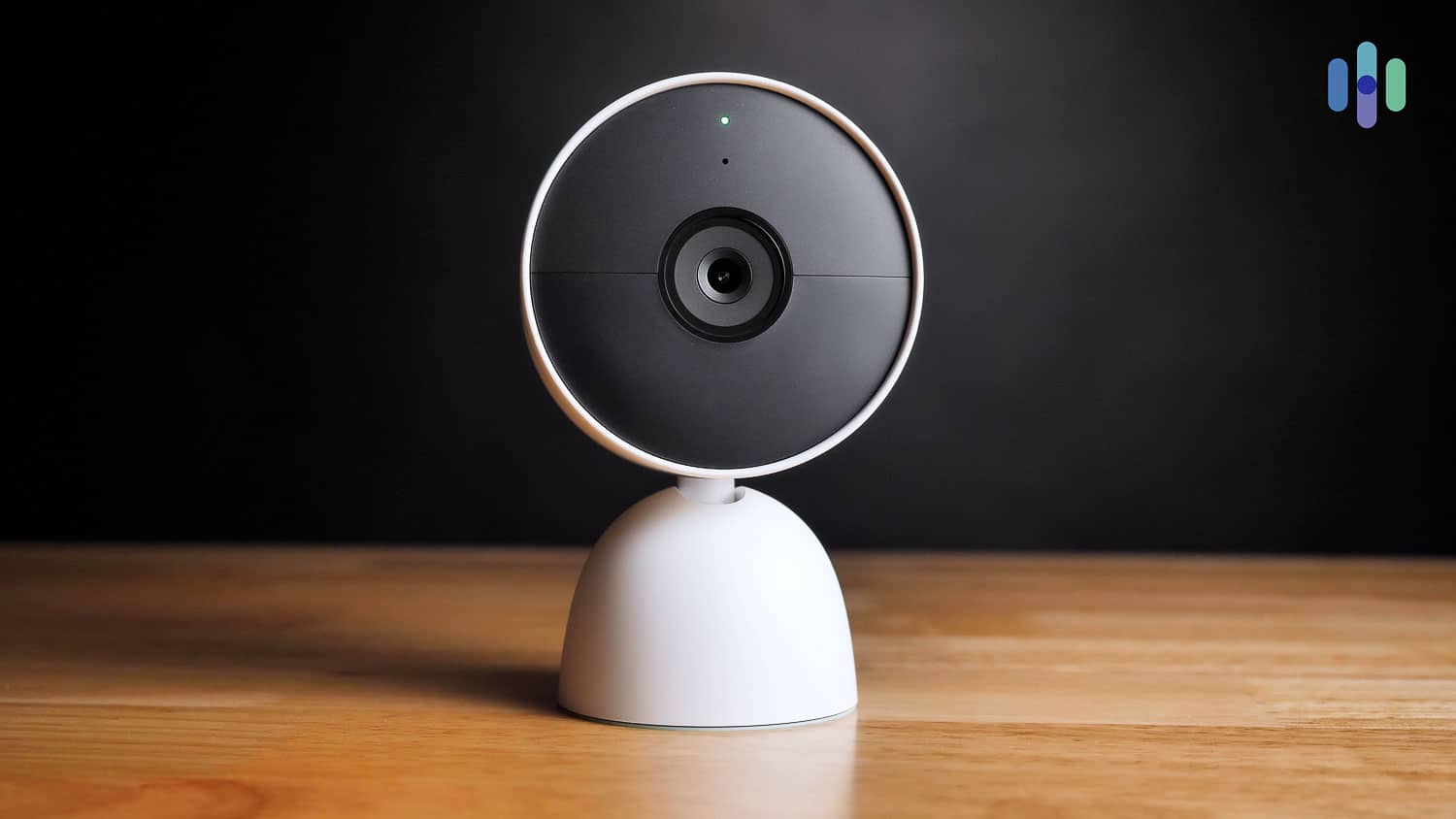
- Livestreaming: Not only should the user be able to livestream the footage from their own system, but there should also be a “video call/security check drop-in” feature for friends and relatives.
- Customer support: Short recommends companies that understand their customers’ needs and thus have experience working with deaf or hard-of-hearing people.
Recap
Security systems are designed to keep everyone safe. They have been built with features to cater to everyone’s preference, such as visual alerts, smartphone notifications, and voice commands. Plus, with brands like ADT, Cove, SimpliSafe, Ring, and abode, you can tailor your security system to meet your needs.
If you don’t need audible alarms, you don’t have to install them. With some systems, you can integrate third-party devices like strobe lights and smart bulbs and build automations to activate them in emergencies. There are also professional monitoring services that can verify alerts and contact the relevant authorities to get help to you fast. Now that these features are available, you have a choice of multiple providers and can decide which security system you want protecting your home.
FAQ About Security Systems for the Deaf
Having a diminished sense of hearing can affect which devices you use beyond home security, but we’re here to answer your questions about deaf-compatible home security systems.
-
What kind of alarm does a deaf person use?
According to the website Healthy Hearing, deaf or hard-of-hearing people can use alarms with the following:
- Visual signals like flashing lights
- Auditory signals that are particularly loud or use lower frequencies
- Vibrotactile signals, such as a vibrating bed shaker, to wake people up
-
How do deaf people call 911?
Deaf people can call 911 by using Text-to-911, a line that they can reach on any mobile device. This is the quickest way for them to contact 911; otherwise, they will have to get emergency assistance by using a relay service or a TTY, a text telephone, which could delay the response, according to the National Association of the Deaf.
-
How do deaf people talk on the phone?
Deaf people can talk on the phone by using a TTY, which contains a keyboard and display screen, or by using a sign language interpreter.
-
What devices help the deaf?
Devices like a TTY help the deaf, as they allow deaf people to read spoken language and respond via a keyboard. Also, devices that light up or vibrate can help deaf people respond to security sensors, alarm clocks, and fire alarms.
-
Are there any security systems designed specifically for deaf people?
There are a handful of security systems on the market today designed specifically with the deaf in mind, but it’s more likely that your system can be tailored to your needs using visual feedback mechanisms rather than audio ones.


